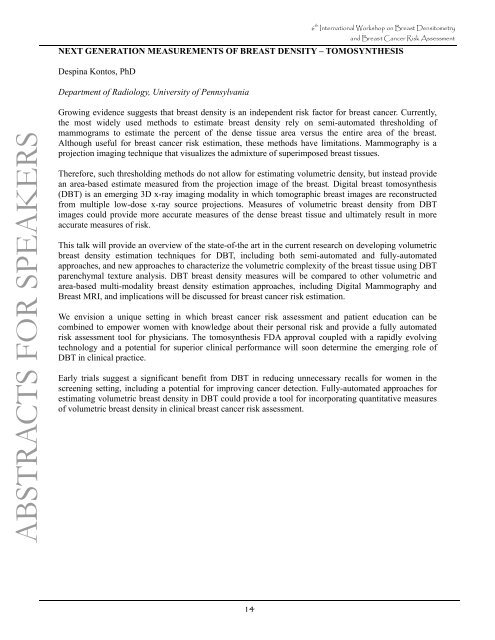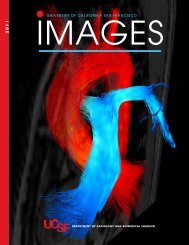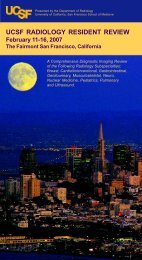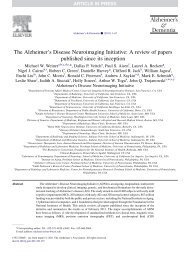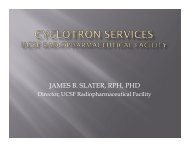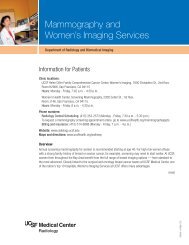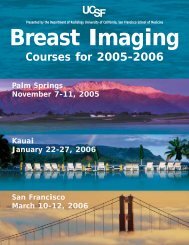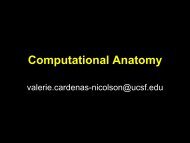6th International Workshop on Breast Densitometry and Breast ...
6th International Workshop on Breast Densitometry and Breast ...
6th International Workshop on Breast Densitometry and Breast ...
- No tags were found...
You also want an ePaper? Increase the reach of your titles
YUMPU automatically turns print PDFs into web optimized ePapers that Google loves.
6 th <str<strong>on</strong>g>Internati<strong>on</strong>al</str<strong>on</strong>g> <str<strong>on</strong>g>Workshop</str<strong>on</strong>g> <strong>on</strong> <strong>Breast</strong> <strong>Densitometry</strong><br />
<strong>and</strong> <strong>Breast</strong> Cancer Risk Assessment<br />
NEXT GENERATION MEASUREMENTS OF BREAST DENSITY – TOMOSYNTHESIS<br />
Despina K<strong>on</strong>tos, PhD<br />
Department of Radiology, University of Pennsylvania<br />
ABSTRACTS FOR SPEAKERS<br />
Growing evidence suggests that breast density is an independent risk factor for breast cancer. Currently,<br />
the most widely used methods to estimate breast density rely <strong>on</strong> semi-automated thresholding of<br />
mammograms to estimate the percent of the dense tissue area versus the entire area of the breast.<br />
Although useful for breast cancer risk estimati<strong>on</strong>, these methods have limitati<strong>on</strong>s. Mammography is a<br />
projecti<strong>on</strong> imaging technique that visualizes the admixture of superimposed breast tissues.<br />
Therefore, such thresholding methods do not allow for estimating volumetric density, but instead provide<br />
an area-based estimate measured from the projecti<strong>on</strong> image of the breast. Digital breast tomosynthesis<br />
(DBT) is an emerging 3D x-ray imaging modality in which tomographic breast images are rec<strong>on</strong>structed<br />
from multiple low-dose x-ray source projecti<strong>on</strong>s. Measures of volumetric breast density from DBT<br />
images could provide more accurate measures of the dense breast tissue <strong>and</strong> ultimately result in more<br />
accurate measures of risk.<br />
This talk will provide an overview of the state-of-the art in the current research <strong>on</strong> developing volumetric<br />
breast density estimati<strong>on</strong> techniques for DBT, including both semi-automated <strong>and</strong> fully-automated<br />
approaches, <strong>and</strong> new approaches to characterize the volumetric complexity of the breast tissue using DBT<br />
parenchymal texture analysis. DBT breast density measures will be compared to other volumetric <strong>and</strong><br />
area-based multi-modality breast density estimati<strong>on</strong> approaches, including Digital Mammography <strong>and</strong><br />
<strong>Breast</strong> MRI, <strong>and</strong> implicati<strong>on</strong>s will be discussed for breast cancer risk estimati<strong>on</strong>.<br />
We envisi<strong>on</strong> a unique setting in which breast cancer risk assessment <strong>and</strong> patient educati<strong>on</strong> can be<br />
combined to empower women with knowledge about their pers<strong>on</strong>al risk <strong>and</strong> provide a fully automated<br />
risk assessment tool for physicians. The tomosynthesis FDA approval coupled with a rapidly evolving<br />
technology <strong>and</strong> a potential for superior clinical performance will so<strong>on</strong> determine the emerging role of<br />
DBT in clinical practice.<br />
Early trials suggest a significant benefit from DBT in reducing unnecessary recalls for women in the<br />
screening setting, including a potential for improving cancer detecti<strong>on</strong>. Fully-automated approaches for<br />
estimating volumetric breast density in DBT could provide a tool for incorporating quantitative measures<br />
of volumetric breast density in clinical breast cancer risk assessment.<br />
14


